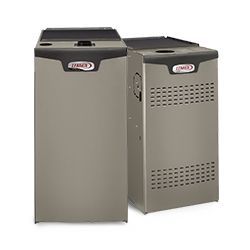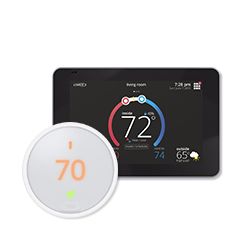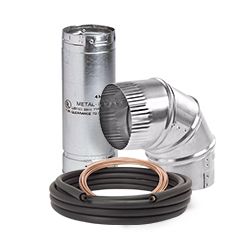
Working around homeowners’ pets
Intimidated, allergic, safety conscience, simply not comfortable around pets? Here are a few tactics you can use.
You’re off to see a customer who is interested in purchasing a new system. After ringing the doorbell, hair-raising barking resonates throughout the hallway to the front door. As the door opens, the homeowner greets you while boxing out an imposing looking Doberman with teeth gnashing, ears pointed, obviously not happy to see you.
The homeowner welcomes you in with comforting news that, “Eddie won’t bite.” During your sales presentation the dog runs wild through the house, and now that he’s gotten used to you, he’s jumping in your lap.
Meanwhile, you’re thinking you have a couple crew members who are not pet-friendly, and could easily be intimidated by Eddie’s fierce presence.
As you wind down your presentation, the homeowner is pleased with your quote. Now she wants to schedule a time to do the work. How are you going to communicate that her pet might pose a few problems?
Smart, safe tactics in dealing with homeowners’ pets
It’s important to let homeowners know upfront that you or your crew are either pet-friendly or not; or have pet related allergies. Giving the homeowner a heads-up to move the pet to another part of the house or put them outside till the work is completed demonstrates your concern for safety and consideration for the pet.
Many crews stage equipment outdoors depending on the weather before bringing everything inside at once for installation. Either way, pets could get hurt if they bump into a sharp metal edge or snag a loose sheet metal screw into their paw.
Discussing your concerns with the homeowner not only keeps you and your crew safe, it also keeps pets from running out the door, becoming frightened from loud noises or agitated by noxious smells from materials, which could be potentially harmful to the pet.
If you foresee a problem talk to the homeowner so they can take steps to keep their pets’ safe, calm and out of the work area when you’re getting ready to start a job. Advise them to:
- Make sure pet wears their collar with ID tags in case they run off when the doors are opened and equipment is being brought into the home.
- Remind homeowner if they move pet to another part of the house let them know they may want to play the radio or television to drown out loud noises.
- Tell homeowner approximately how long the job will take so they can choose whether to leave pet in the home or take to a temporary location.
Remember, safety first
If pets pose a problem, take a few minutes to discuss your safety concerns with homeowners’ and your crew. The last thing you need to worry about is the safety of your crew, or endangering the homeowner’s pet.


